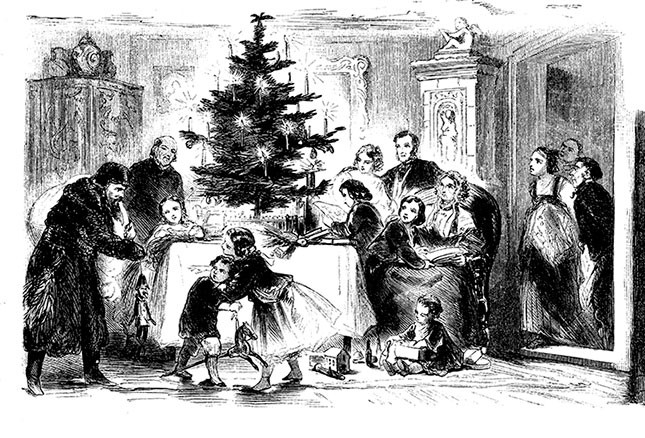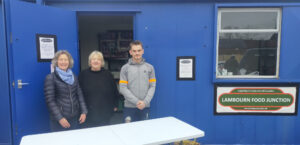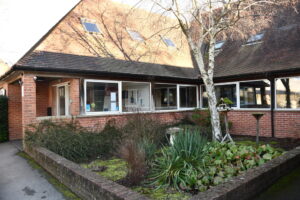
Most of us tend to think of Christmas in the 19th century as it is depicted in the novels of Charles Dickens and appears on many of our modern greeting cards. The reality was often very different. The diary kept by the landlord of the Red Lion between 1880 and 1900 gives some idea of how Lambourn celebrated the festive season.
Church was an important part of Christmas Day. Although the family sometimes missed attendance at the 8am Communion. In 1893 there were 84 communicants at this service, said to have been the largest number ever. Sometimes the early service was at 7am but the early hour did not seem to deter the congregation. Most would have been at work by this time throughout the year.
White Christmases seem to have been a myth. The weather did not comply with tradition in any way. Of 14 Christmas Days recorded in this period, only two had a frost and the remainder were mild or wet.
In 1881 there may have been no Christmas snow but in January a huge blizzard swept the countryside covering everything with several feet of snow.
In the late afternoon, a wagon drawn by three horses and accompanied by a man and a boy left the Red Lion. After hastily draining their tankards of ale they set off into the darkening night heading for Ashdown Park. The carter applied his whip hoping to complete his journey before the already heavy snow became worse.
None of them were seen alive again. A fortnight later, all were found; man, boy and horses, all frozen to death in the snow within a few hundred yards of their destination. Such was the impression made by such weather that it was still talked of in Lambourn more that half a century later.
Presents were not mentioned, except a bottle of whisky for the Police Sergeant and two ducks sent to the Red Lion by a farmer.
Boxing Day was more exciting with various sporting events taking place. In 1882 the Craven Hunt met at Lambourn Place. Coursing was arranged at Ashdown in 1893 and there was football at Aldbourne in 1896. For those not inclined towards blood sports the Drum and Fife Band performed.
The Landlord, as a member of the Board of Guardians, visited Hungerford Workhouse in 1891. Any comments made by the occupants about Christmas are not recorded.
In the weeks before Christmas there were various treats for the children organised by the church and the chapel but the big event for all was the Lambourn December sheep fair. The fair was in decline by this time but was enjoyed by all the children who were given a day off school to help with the sheep. The adults no doubt took the opportunity to visit the Red Lion and the six other inns in Lambourn where the dealers, sheep farmers and shepherds refreshed themselves after a hard day at the fair.
The New Year was usually marked by the bell ringers who rang a peal at midnight. In 1894 the bells were not rung because of the illness of Mrs Harris, wife of the grocer in the Market Place (now Robinson’s) the landlord of the Red Lion gave 10 quarts of beer to his taproom customers and gave one of his men notice to leave!
All these events may well seem trivial and boring to a modern generation used to a choice of many amusements but the children of late Victorian England became the men and women who faced up to the disasters after 1914 and they may well have looked on their childhood as a golden age.
This article was written by the late John Penfold and originally published in Village Views. The details were extracted from his Grandfather’s Diaries, who was the landlord of the Red Lion in Lambourn at the end of the 19th Century. Reproduced with the kind permission of Peter Penfold.




